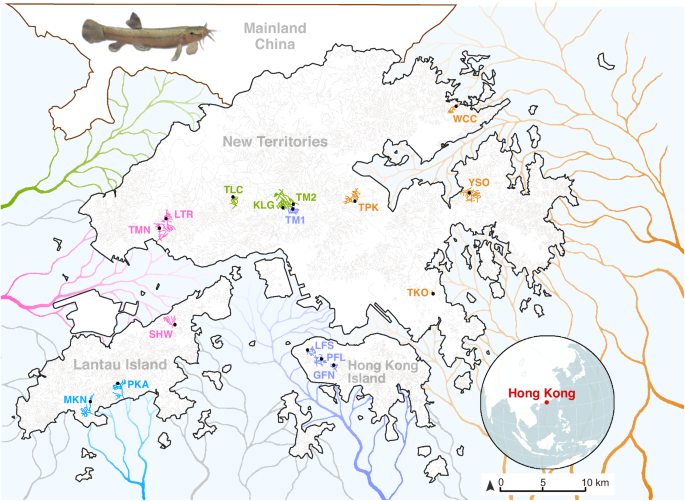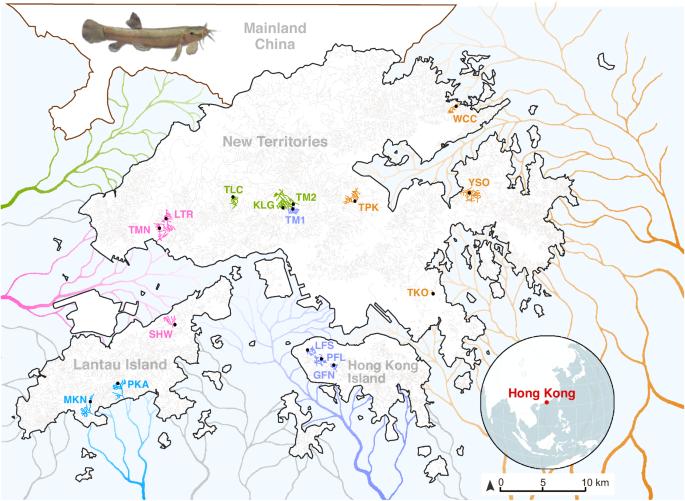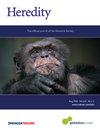Ecological genetics of isolated loach populations indicate compromised adaptive potential
IF 3.9
2区 生物学
Q2 ECOLOGY
引用次数: 0
Abstract
Many endangered species live in fragmented and isolated populations with low genetic variability, signs of inbreeding, and small effective population sizes - all features elevating their extinction risk. The flat-headed loach (Oreonectes platycephalus), a small noemacheilid fish, is widely across southern China, but only in the headwaters of hillstreams; as a result, they are spatially isolated from conspecific populations. We surveyed single nucleotide polymorphisms in 16 Hong Kong populations of O. platycephalus to determine whether loach populations from different streams were genetically isolated from each other, showed low levels of genetic diversity, signs of inbreeding, and had small contemporary effective population sizes. Estimates of average observed heterozygosity (HO = 0.0473), average weighted nucleotide diversity (πw = 0.0546) and contemporary effective population sizes (Ne = 10.2 ~ 129.8) were very low, and several populations showed clear signs of inbreeding as judged from relatedness estimates. The degree of genetic differentiation among populations was very high (average FST = 0.668), even over short geographic distances (<1.5 km), with clear patterns of isolation by distance. These results suggest that Hong Kong populations of O. platycephalus have experienced strong genetic drift and loss of genetic variability because sea-level rise after the last glaciation reduced connectedness among paleodrainages, isolating populations in headwaters. All this, together with the fact that the levels of genetic diversity and contemporary effective population sizes within O. platycephalus populations are lower than most other freshwater fishes, suggests that they face high local extinction risk and have limited capacity for future adaptation.


与世隔绝的泥鳅种群的生态遗传学表明其适应潜力受到损害。
许多濒危物种生活在支离破碎的孤立种群中,遗传变异性低,有近亲繁殖的迹象,有效种群规模小,所有这些特征都增加了它们灭绝的风险。平头泥鳅(Oreonectes platycephalus)是一种小型鳅科鱼类,广泛分布于中国南方,但只分布于山溪的上游;因此,它们在空间上与同种种群隔离。我们调查了16个香港泥鳅种群的单核苷酸多态性,以确定来自不同溪流的泥鳅种群之间是否存在遗传隔离、遗传多样性水平低、近亲繁殖迹象以及当代有效种群规模小等问题。平均观察杂合度(HO = 0.0473)、平均加权核苷酸多样性(πw = 0.0546)和当代有效种群大小(Ne = 10.2 ~ 129.8)的估计值都很低,而且从亲缘关系估计值来看,几个种群有明显的近交迹象。种群间的遗传分化程度非常高(平均 FST = 0.668),即使在短地理距离内 (
本文章由计算机程序翻译,如有差异,请以英文原文为准。
求助全文
约1分钟内获得全文
求助全文
来源期刊

Heredity
生物-进化生物学
CiteScore
7.50
自引率
2.60%
发文量
84
审稿时长
4-8 weeks
期刊介绍:
Heredity is the official journal of the Genetics Society. It covers a broad range of topics within the field of genetics and therefore papers must address conceptual or applied issues of interest to the journal''s wide readership
 求助内容:
求助内容: 应助结果提醒方式:
应助结果提醒方式:


